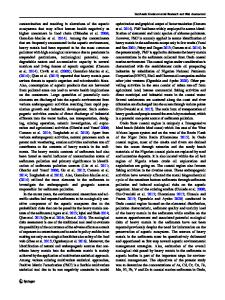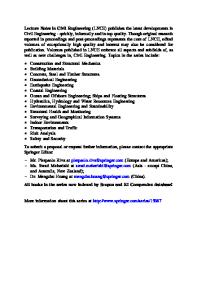Source apportionment and source-specific health risk assessment of heavy metals in size-fractionated road dust from a ty
- PDF / 726,899 Bytes
- 14 Pages / 595.276 x 790.866 pts Page_size
- 93 Downloads / 360 Views
RESEARCH ARTICLE
Source apportionment and source-specific health risk assessment of heavy metals in size-fractionated road dust from a typical mining and smelting area, Gejiu, China Guanghui Guo 1,2
&
Degang Zhang 1,2 & Yuntao & Wang 1,2
Received: 1 April 2020 / Accepted: 18 October 2020 # Springer-Verlag GmbH Germany, part of Springer Nature 2020
Abstract Source-specific health risk apportionment for heavy metals is critical for pollution prevention and risk management in mining and smelting areas. An integrated method combining health risk assessments with the positive matrix factorization model was proposed to evaluate source-specific health risks for adults and children. A typical mining and smelting area was taken as an example in the present study to apportion the source-specific health risks to humans. A total of 37 road dust samples collected from the industrial (IA) and residential areas (RA) of Gejiu (China) were analyzed for heavy metals (Cd, Cr, Cu, Ni, Pb, and Zn). The results indicated that road dust in the study area was mainly contaminated with Cd, Cu, Pb, and Zn. Three potential sources, including atmospheric deposition, industrial waste, and natural sources, were identified and quantified, with contributions of 43.32%, 30.83%, and 25.85%, respectively. For non-carcinogenic risks, a similar trend of the source contribution was found for adults and children under the same land use; atmospheric deposition made the greatest contribution to the non-carcinogenic risk in both IA and RA. However, for carcinogenic risk, natural sources were the greatest contributor to human health risks in both IA and RA, followed by atmospheric deposition and industrial waste. The investigation in this study allowed the evaluation of health risks from potential contamination sources and the results provide valuable information on health risk mitigation strategies for environmental managers. Keywords Heavy metals . Road dust . Source apportionment . Source-specific health risk . Positive matrix factorization
Introduction Mining and smelting activities can cause serious environmental pollution because large amounts of heavy metals Responsible Editor: Philippe Garrigues Supplementary Information The online version contains supplementary material available at https://doi.org/10.1007/s11356-02011312-y. * Guanghui Guo [email protected] Degang Zhang [email protected] Wang [email protected] 1
Institute of Geographic Sciences and Natural Resources Research, CAS, Beijing 100101, China
2
University of Chinese Academy of Sciences, Beijing 100049, China
are released into the surrounding areas (Li et al. 2014; Wang et al. 2017; Huang et al. 2018b; Tian et al. 2019). It is well documented that atmospheric particulate matter (Hinwood et al. 2014), road dust (Zibret et al. 2013), water (Gao et al. 2019), sediment (Zhao et al. 2020), soil (Liang et al. 2017), and crops (Li et al. 2014) in mining and smelting areas are contaminated with heavy metals. Road dust is regarded as a major indicator of environmental quality
Data Loading...











